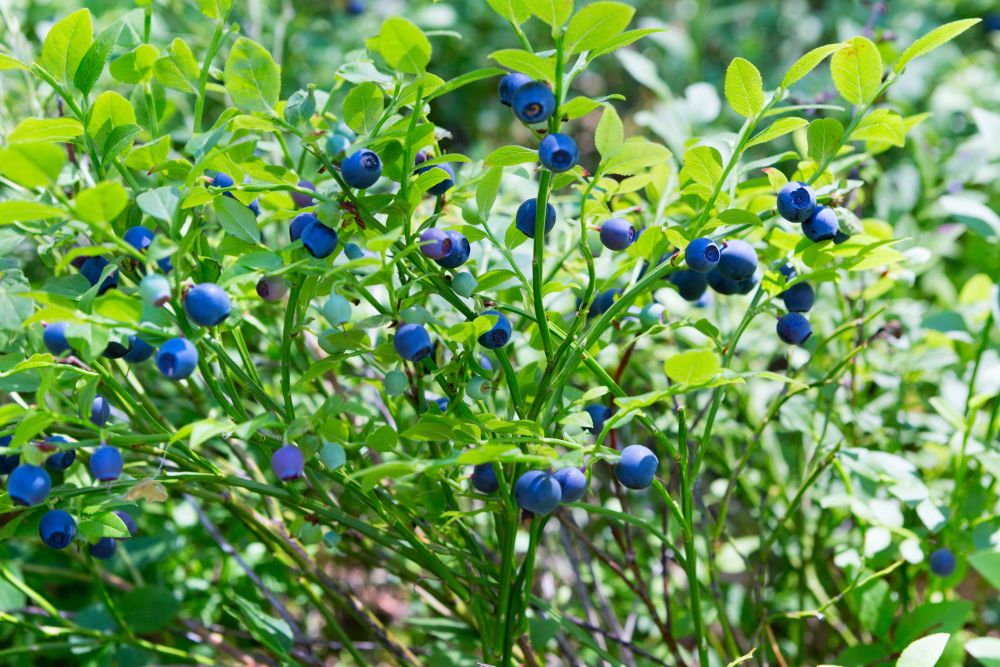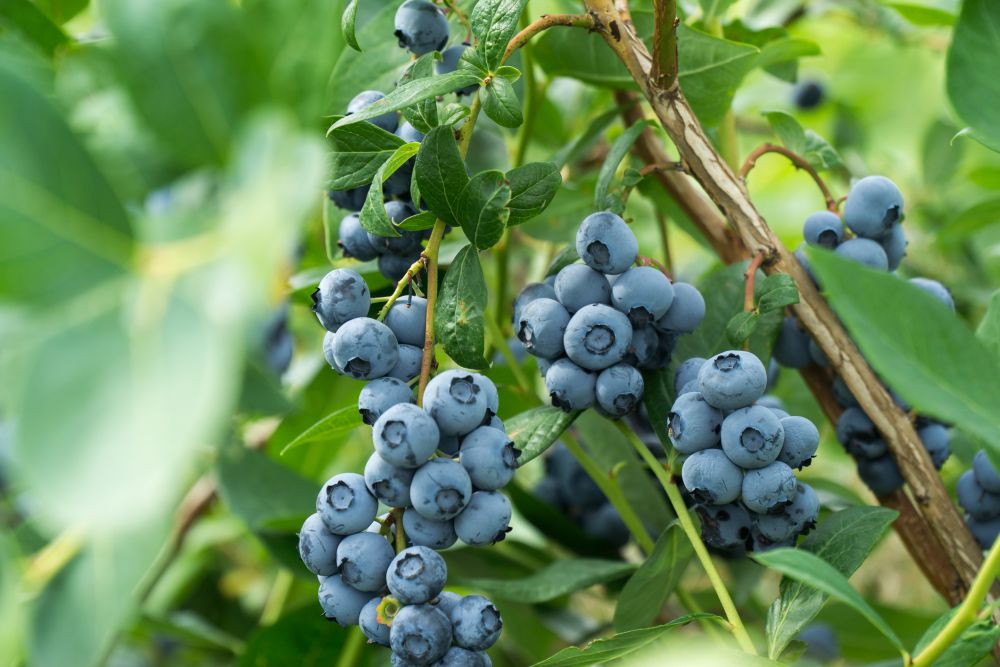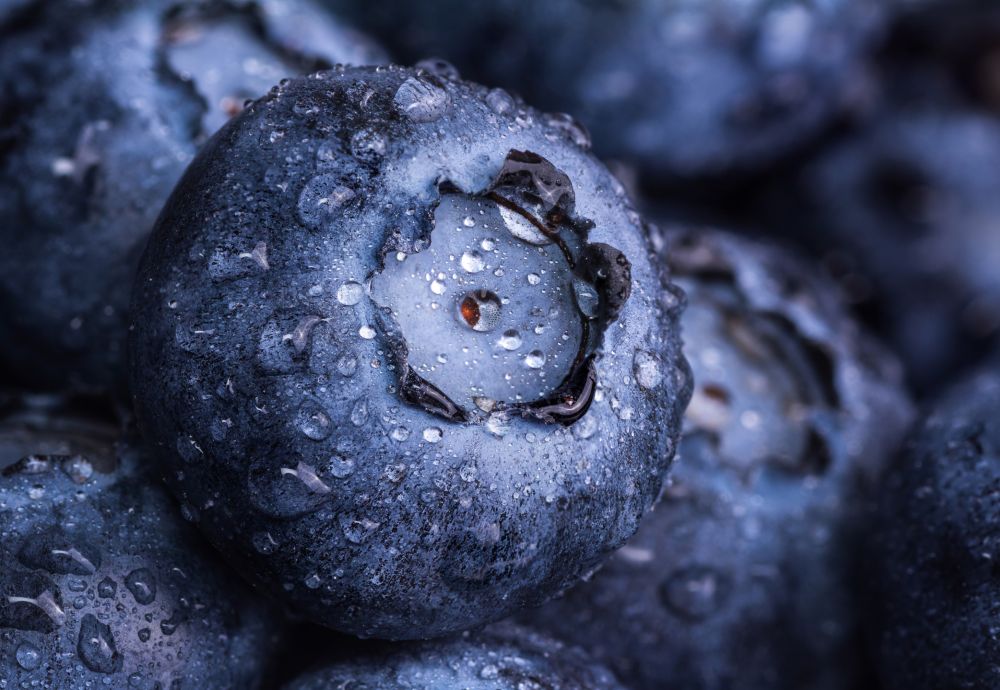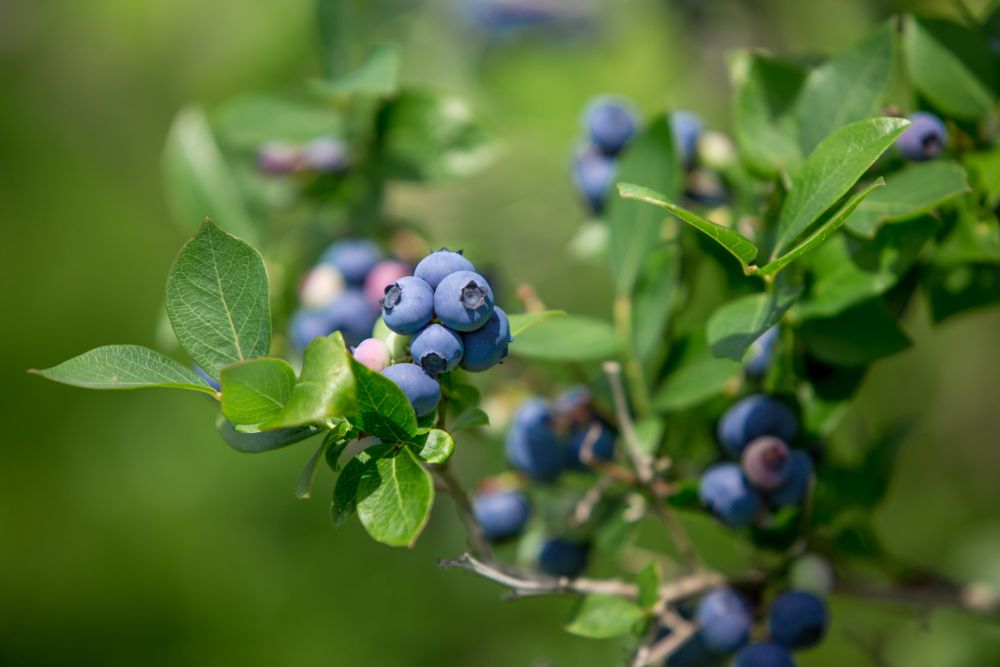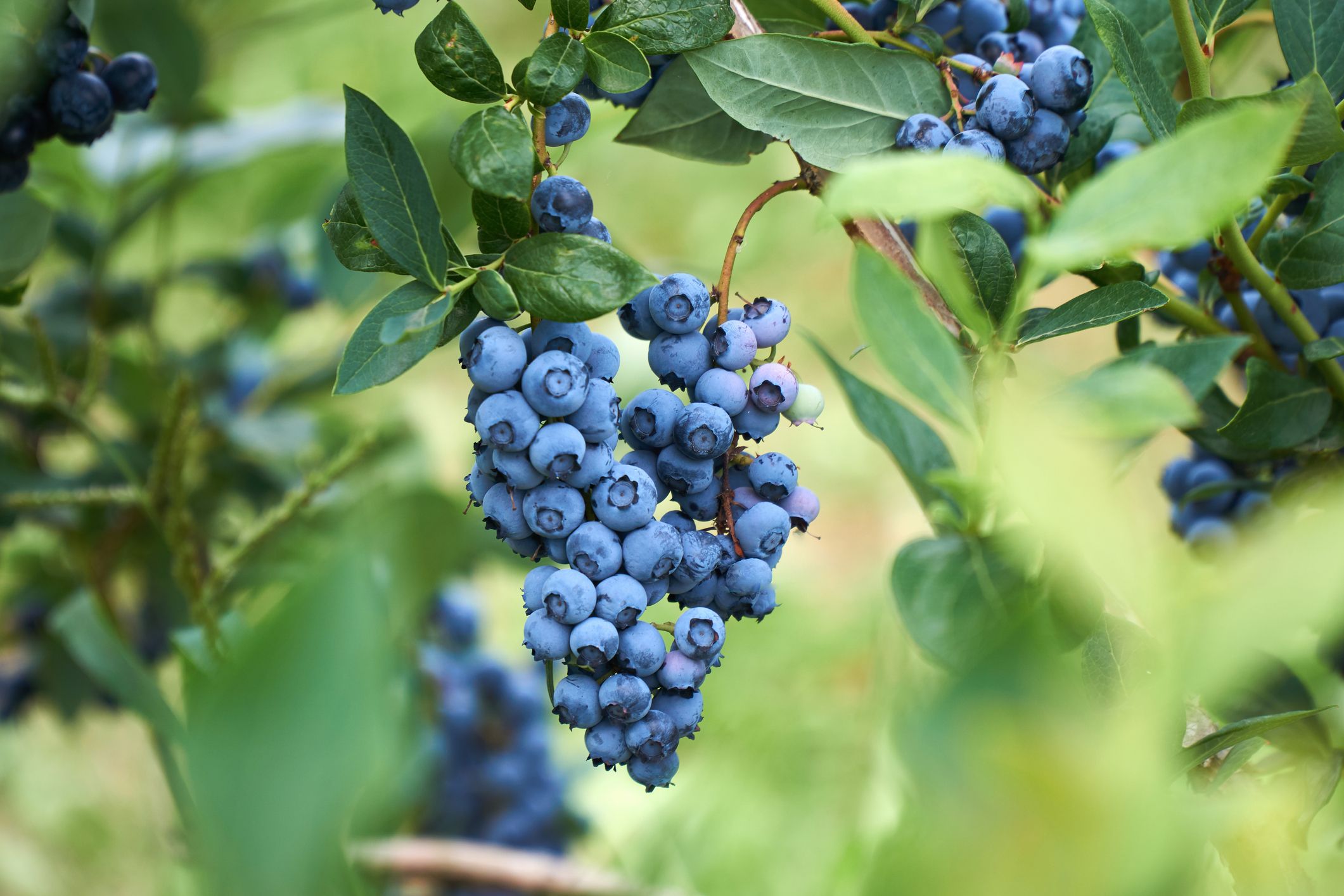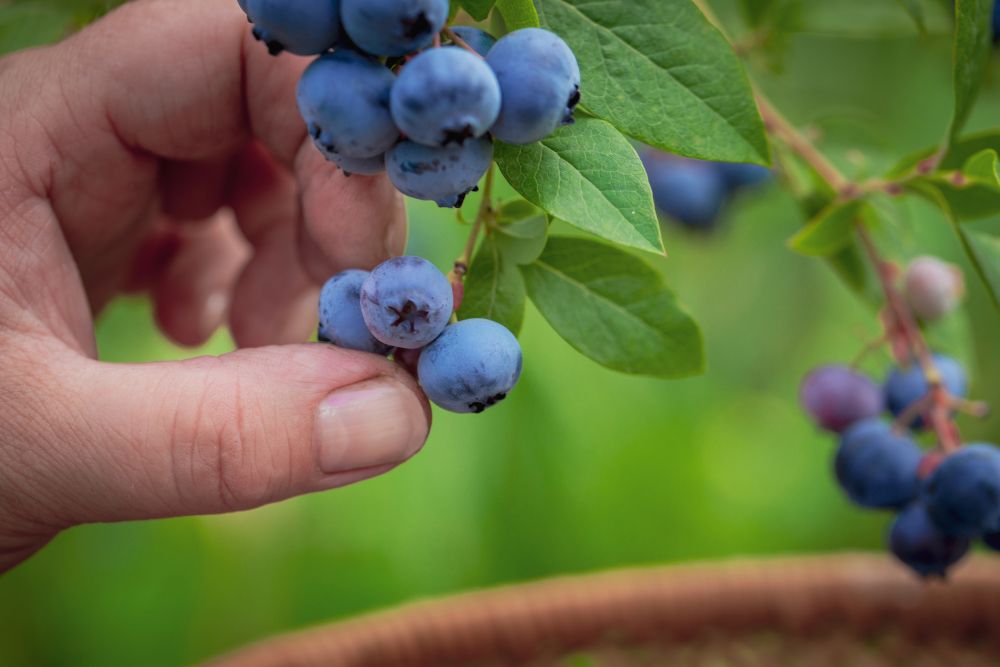Blueberry Growing Problems – Common Blueberry Issues
Blueberry growing problems are different from the wide array of diseases your berries face. Growing problems have to do with the yield of berries you get every year. Sometimes the blueberries won’t flower which means they won’t produce.
Other times, the berries won’t ripen or ripen; they will taste sour or grainy. And then there are problems with blueberry maggots and bud mite damage. It’s a long list and we’ll go through it one by one and provide ways to fix the problem and ensure you have a healthy and decent harvest year after year.
Blueberry Plants Not Producing
As a native of North America, blueberries should have no problems with the weather conditions. So when your blueberries stop flowering, don’t look up at the sky, and focus instead on the soil. But even when they flower, sometimes the annual yield is less than usual and that’s when you need to examine the growing conditions around the blueberries more closely. Some of the reasons for low or no blueberry yield include the following.
- Blueberries may not flower due to the soil pH being too high. In ideal conditions, they prefer the pH soil to be between 4.5 and 5.0.
- They may not produce well because of poor pollination. Cross-pollination helps improve their productivity.
- The plant is too young to produce.
- Lack of pruning.
- Poor soil.
- Pest infestation.
How to Fix it
Since this is a long list of causes, then the best way to ensure your blueberry plant is at its most productive, you should go through the above list and painstakingly fix them one by one. Here are possible solutions to the above problems.
- Amend the soil pH if you notice the annual bloom is less than usual. Add aluminum sulfate or sulfur to the soil in small doses and test the pH after every application. The soil pH should be below 5.0.
- If you only have one blueberry plant in the garden, consider planting another one less than 100 feet away. That way the bees and other pollinators will cross-pollinate both berries and increase their yield.
- Blueberries will not produce in their first year even though they will have plenty of flowers. It is recommended that you pick all the flowers off the plant in the first year to encourage robust foliage growth.
- Pruning is important for blueberries. It should be done every year when the plant is dormant. Aim to trim away about 20 percent of the branches every time. Also, remove any growth around the base of the plant.
- Fertilizing the plant should start from the second year around bloom time and increase it incrementally every year. Use ammonium sulfate and side dress with a well-balanced fertilizer if needed.
Blueberry Growing Problems: Blueberries Aren’t Ripening
Blueberries need a chill period to become ripe. How fast they ripen depends on how cold the winter in your zone is. In warm zones, the berries might need longer periods of time to ripen than in cold zones. It might also have to do with the cultivar you grow. Some cultivars take longer to ripen.
Soil acidity and lack of sunlight are two more reasons the blueberries will not ripen. As we mentioned earlier the soil pH has to be between 4.5 and 5.0. But overall, if the blueberries are not ripe yet, that could just mean, you need to give them more time.
How to Fix it
As far as blueberry growing problems go, this one is easy to deal with. For the most part, you may have to do nothing to get the blueberries to ripen. That’s because they will ripen eventually once they’ve had enough chill hours. Chill hours are defined as the periods when the temperature stays below 45 degrees Fahrenheit. That said, it also helps to take a few steps to make sure the blueberry will ripen.
- Pick a cultivar that suits your growing zone. The best way is to ask your local nursery about the right blueberry cultivars for you. But some recommended cultivars include Beckyblue and Aliceblue both requiring 250 chill hours. You could also try out Star which needs 400 chill hours and the fast maturing Sharpblue that only requires 200 chill hours.
- Amend the soil as we explained in the previous section about blueberries not producing.
- Blueberries need 6 to 8 hours of full sun every day during the growing season. So don’t plant your blueberry in the shade of a large tree or any other structure.
Blueberries Are Sour
For the most part, blueberries are sweet. Some cultivars have a slight acidic streak or a tarty taste. But a sour ripe blueberry means something went wrong between the time the female flower was pollinated and the mature berry was harvested. If you planted a sweet cultivar and the end product was sour, there are many reasons this would have happened.
- High productivity is one reason the blueberries turn out sour. The plant has limited resources and it cannot keep up with so many berries at one time.
- You picked them too soon. Blueberries need to ripen on the branches.
- Some cultivars will not ripen all at once. So pick berries from different spots on the plant and taste them before you harvest your blueberries.
- Wrong soil pH or lack of fertilizing.
- The cultivar you planted produces tart berries.
How to Fix it
Apart from the last reason which has to do with the cultivar itself, there are fixes to these issues. Here are a few things you can do.
- For the first year, pick all flower buds on the young blueberry to help it establish a good root system and foliage. For subsequent years, if you notice the branches covered with too many berries, thin them out to increase the size and sweetness of the harvest.
- Ensure the soil acidity is between 4.5 and 5.0.
- Fertilize the blueberry with ammonium sulfate once the flowers open.
- Sample your blueberries before you decide all the berries are ripe and ready to harvest.
- If in doubt, give the blueberries another 10 days before harvesting them.
- If you already harvested the sour berries, spread them out on a dry sheet in a dark room and place a few apples or avocados among them. That would get the berries to soften although the taste may not improve.
Blueberry Growing Problems: Winter Damage
As perennial plants, blueberries have a good strategy to combat the cold winter months. Once the temperature drops, the plant stops growing altogether, conserves its resources, and goes into dormancy. That’s the main defense of the blueberries and if dormancy doesn’t develop well before the first frost, the plant could be too damaged to survive.
There are a few reasons why the plant may not achieve full dormancy before the cold weather sets in. One of those has to do with unpredictable weather conditions. Blueberries need subtle signs and gradual changes in temperature for them to start going into dormancy. If a sudden cold front hits the plants before they’re fully dormant, that could prove to be fatal for them.
Or it could be the other way round. Right in the middle of winter, suddenly the weather turns and the soil warms up. This warm spell could awaken the plants from their dormancy only for the temperature to dip below 25 degrees Fahrenheit again and cause havoc.
How to Fix it
If the weather is unpredictable in your zone and the winter rarely announces itself in advance, then you need to take care of your blueberries. That winter care involves protecting the plants against the elements. Here’s how to do that.
- Cover the plants with a plastic frame and nail it to the ground. It will have the same protection as a greenhouse.
- Use a thick layer of mulch around the plants to prevent the roots from freezing during the night.
- Plant cold-hardy cultivars such as Brightwell, Tifblue, Powderblue, and Centurion.
Blueberry Growing Problems: Blueberry Maggots
Maggots and fruits don’t mix. And if the fruits are as tiny as blueberries, all the more reason you should fight those pests with everything you got. In the case of blueberries, white worms hatch inside of the tiny berries and feed on their flesh. Then move on to the next and the next. Before you know it, the whole crop is ruined. So where do those worms come from?
The white worms are the larvae of black flies. The flies become active in the summer and lay their eggs inside the berries. This turns the blueberries into a black flies bed and breakfast.
How to Fix it
Monitoring your blueberries from the middle to late summer is crucial for preventing this infestation. When you see black flies hovering over the berries, that’s a good sign, they’re about to lay their eggs. And since the eggs hatch within three days, you have a small window to act.
- Use sticky cards to lure black flies and kill them. For bait, cover the cards with ammonium acetate-based protein. When the flies land on the cards they get stuck. Use this method to identify the threat of black flies.
- Use spinosad-based sprays on the leaves and female flowers right after pollination.
- Encourage parasitic wasps to visit your garden since they’re the natural enemies of black flies.
- To prevent black flies from piercing the berries, apply kaolin clay to the blueberries.
- Plant pest-resistant cultivars such as Northland, Herbert, Earliblue, and Bluetta. They are less likely to attract black flies.
Blueberry Growing Problems: Bud Mite Damage
This is actually one of the most difficult blueberry growing problems to deal with. Mites infect blueberry buds and cause damage to them. And just like black fly larvae, the mites live inside the buds and feed on them from inside. So what are they and what can you do about them?
Bud mites are tiny arthropods that you cannot see with the naked eye. Yet the damage they cause is very much in plain sight. The red cracks in the green buds are telltale signs you have a blueberry bud mite infestation. And if left without treatment, the whole bud would die. And if it doesn’t die, the berry that develops out of it will look deformed and scarred. In case of heavy infestation, you could lose your whole blueberries crop for that year.
How to Fix it
Blueberry bud mites spend their entire lives ensconced within the stem and buds of the blueberry plant. Infections often start in the fall and the pests feed, grow, and procreate all inside of the plant. By the spring, mites are ready to move to the buds.
You should apply a miticide about once a month to prevent the infection and spread of blueberry bud mites. Unfortunately, though, there’s no natural predator you can use to fight off these mites and no cultivar is immune to their attack. So apart from spraying a miticide, you can only prune old blueberry canes which might be infected to prevent the spread of the pests.

